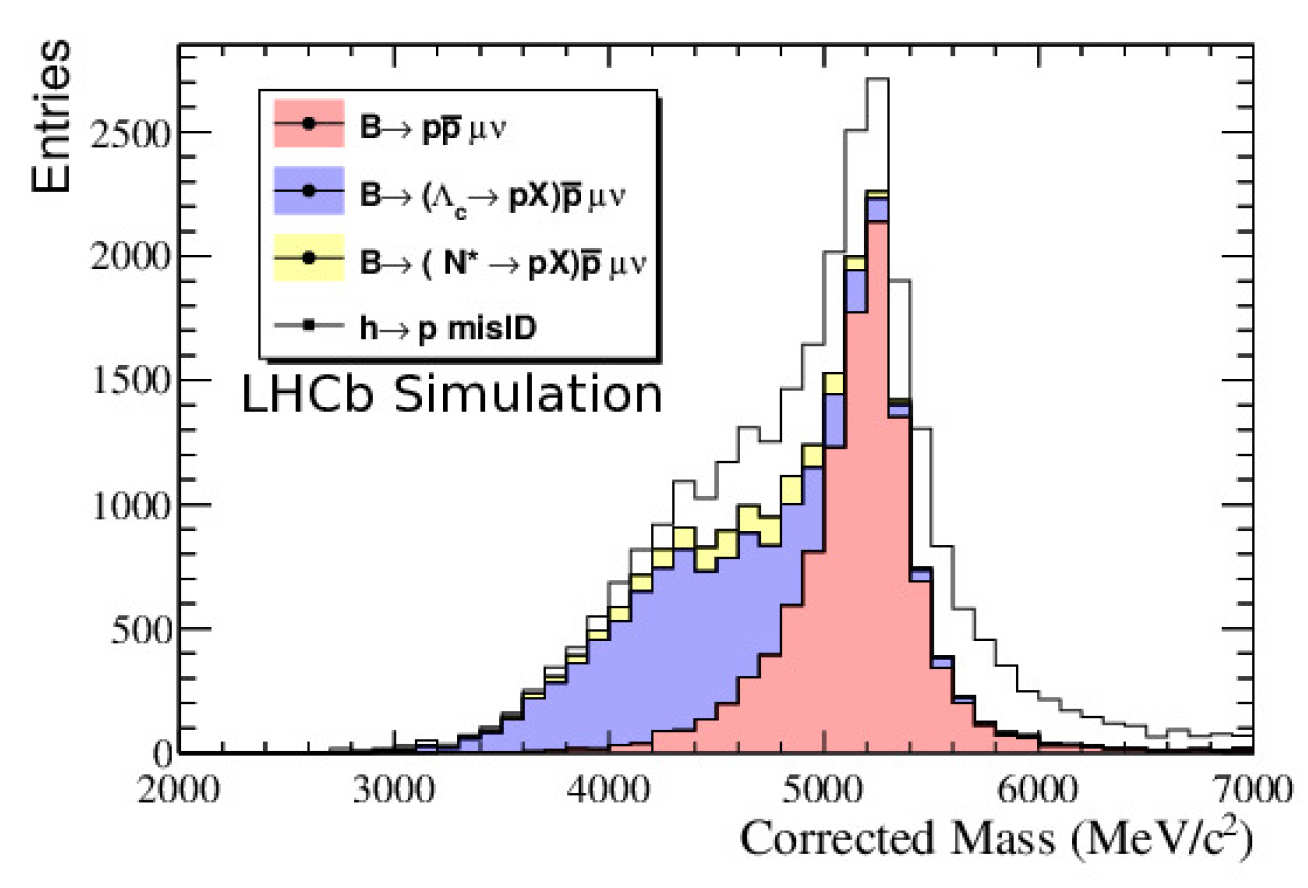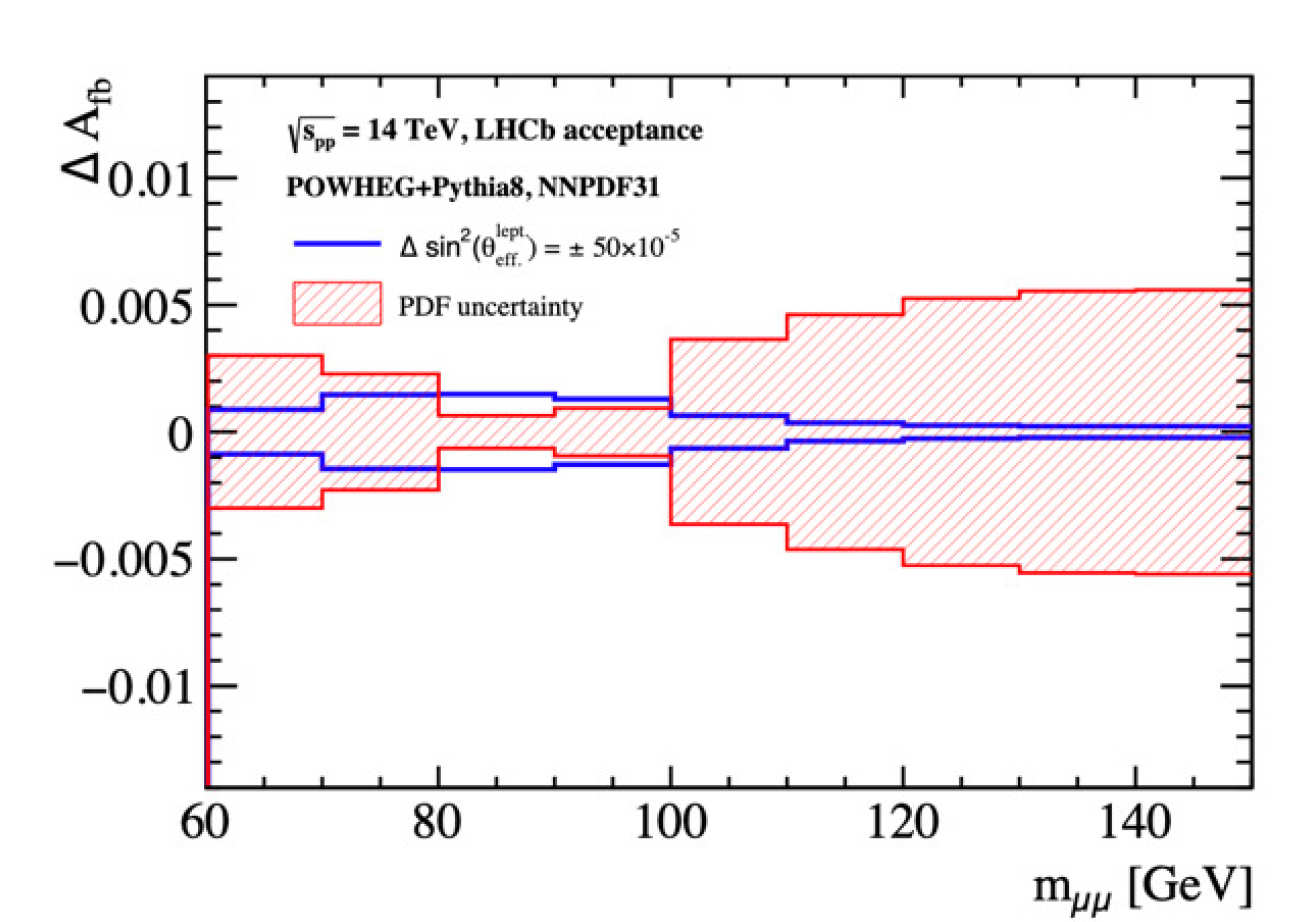Semileptonic decays and indirect probes of new physics
Semileptonic decays
Semileptonic decays are of the form b → c(u)lν, a beauty quark decaying to a charm or up quark, a lepton and a neutrino. In the standard model these are mediated by a W boson. This is a so-called tree level decay, and is typically produced in very large numbers at LHCb, but present a challenge due to the neutrino escaping detection.
There has been much interest recently due to measurements of the lepton universality in decays B → Dlν and B → D*lν where the lepton is a muon or tau. These measurements made at LHCb and other experiments show deviations from the Standard Model prediction. A major background to such decays are so-called feed-down decays, decays proceeding through higher resonance charm states, resulting in the same charm meson, and lost particles that are masked by the missing neutrino. We are working on analysing the decays B → D**lν, to understand this effect.
The lepton universality signal can be tested in decays to u-quarks. This has a much smaller SM expectation, due to the structure of the CKM matrix. New Physics does not need to have the same structure as the CKM matrix, and so could contribute more visibly to such decays. We are currently working on a lepton universality measurement in the channel B → pp̅lν, the presence of protons in the final state significantly reducing the potential backgrounds. An example of the reconstruction of the muon mode can be seen below.

Electroweak
We also work on making precision measurements of electroweak physics phenomena. These quantities are very precisely predicted in the Standard Model, such that any deviation is indicative of new phenomena and effects.
As part of this programme we are studying the physics of Z bosons, and a quantity within the Standard Model known as the weak mixing angle. This quantity sets the interactions of the Z boson, and lies at the heart of electroweak phenomena within the Standard Model. The angular structure of Z boson decays to a dimuon final state vary as this parameter varies – shown below is the forward-backward asymmetry (Afb). The variations in Afb that arise from shifts in the weak mixing angle (shown in blue) are very different to those that arise from other sources of theoretical uncertainty (shown here in red are those associated with knowledge of the proton structure, or PDFs). Consequently, a precision measurement of Afb at LHCb will enable a new determination of the weak mixing angle.

In addition, we work on similar asymmetry measurements in di-b-jet systems, probing the relative angles at which b quarks and anti-quarks are produced. These measurements investigate the production mechanisms and couplings of these quarks, which can also be compared to predictions from the Standard Model – probing QCD, electroweak physics – and potentially new phenomena.
Dark matter
Many astrophysical searches for dark matter require an understanding of the production cross-sections of various processes; typically to understand potential backgrounds from cosmic ray collisions mimicking dark matter annihilation signals. We are working on the production cross-section for anti-deuterons from proton-proton collisions. This required modification of the LHCb reconstruction to include the potential for deuterons, and will be the first time deuterons have been seen in LHCb.


